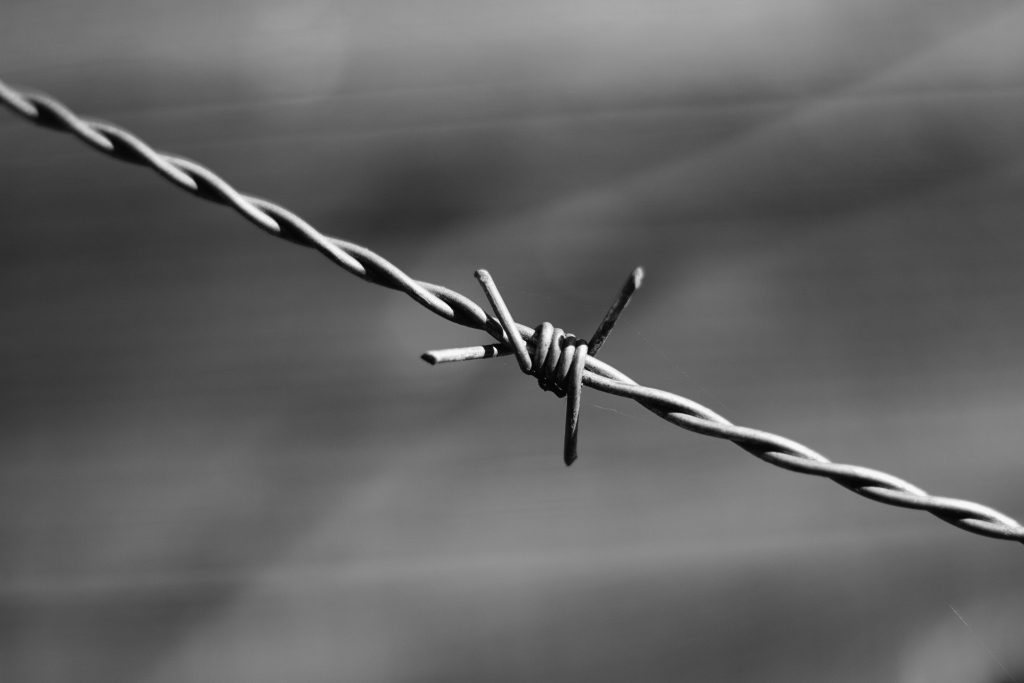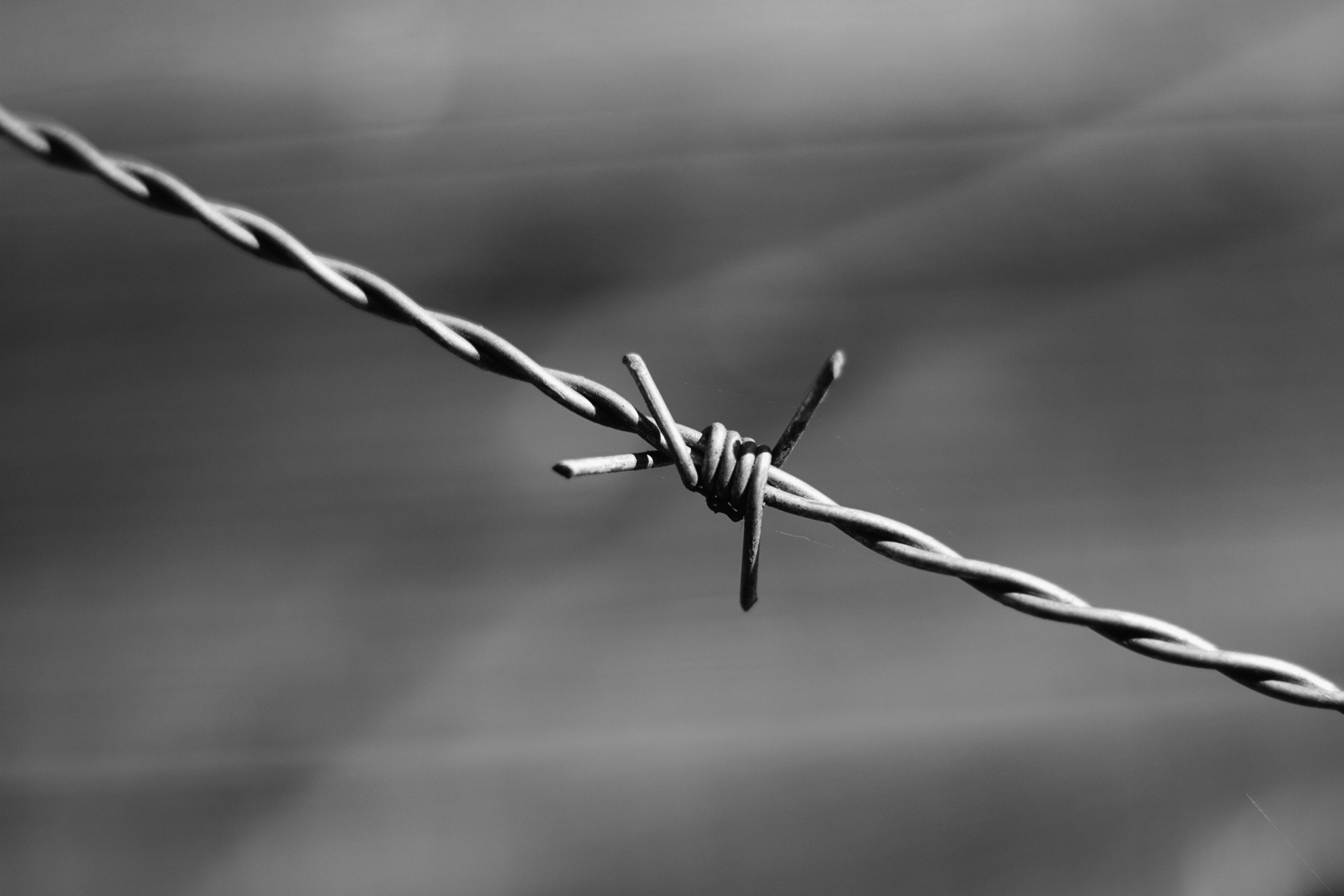
Barbed wire fences are a practical choice for enhancing security and clearly marking property lines. They’re tough, cost-effective, and act as a strong deterrent against intruders.
Whether you’re trying to protect a construction site with valuable equipment and tools or you have an important event coming up and can’t risk any complications with trespassers, this is a great fencing solution.
Yet, figuring out how to install a barbed wire fence can be tricky and raises safety concerns, especially for those new to fencing. That’s where we come in. With more than 50 years of experience, Viking Rental is the trusted name in Texas for barbed wire fence rentals and installations.
We’ll walk you through every step, from selecting the right materials to the final installation, ensuring you end up with a fence that meets your needs.
But if you’d rather not worry about the details, reach out to let us handle the installation. You can focus on what you do best, knowing your property is in expert hands with our:
- Barbed wire fence rental Dallas
- Barbed wire fence rental Austin
- Barbed wire fence rental Houston
- Barbed wire fence rental Fort Worth
Still curious about the barbed wire fence installation process? Learn what goes on behind the scenes when erecting these security stalwarts below!
Why Install a Barbed Wire Fence?
Installing a barbed wire fence bolsters security, defines boundaries, and protects livestock. This type of temporary fencing serves as a physical barrier that is both visible and effective, making it a deterrent for potential intruders.
The sharp barbs are designed to discourage attempts to climb or cross the fence, providing a layer of protection that is simple yet formidable. This makes it particularly compelling for those looking to safeguard a site, whether it’s to protect construction equipment from theft or to prevent vandalism.
Farmers and ranchers find barbed wire especially useful for containing and safeguarding livestock. The wire creates a secure enclosure, preventing animals from wandering off and protecting them from predators. This is crucial not only for the safety of the animals but also for the financial stability of farming and ranching operations.
Barbed wire fences are relatively low-cost and require minimal maintenance, making them an economical choice for long-term perimeter security. They are also adaptable to various terrains, whether it’s rolling hills or flat plains, ensuring that no matter the landscape, your fence can be installed effectively.
That being said, is barbed wire fence installation right for you? Let’s look at a few key considerations before we get into how to install a barbed wire fence.
Key Considerations Before Barbed Wire Fence Installation
While there is no denying the benefits of barbed wire security fencing, it can be a bit much in some situations – like a standard event or during disaster relief.
So, it’s essential to evaluate your specific needs and the implications of installing such a barrier before we move forward:
- Local Regulations and Zoning Laws: Check with your local government to understand the regulations surrounding the use of barbed wire fencing. Some areas may have restrictions or require permits due to safety concerns or aesthetic considerations.
- Purpose of the Fence: If you need a barrier for crowd control or to secure a private area temporarily, barbed wire may be suitable. However, if your goal is to create a more permanent and less aggressive-looking boundary, alternative fencing options might be more appropriate.
- Neighborhood Context: In residential or suburban areas, barbed wire may be seen as too aggressive or unsightly. While it’s practical, it might not blend well with the surroundings or could convey an unwelcoming message. On the other hand, it might be more commonly accepted and expected in rural or industrial zones.
- Wildlife Considerations: If your property is in an area with wildlife, consider the impact of barbed wire on the local ecosystem. Animals can injure themselves on the barbs, so in some cases, a different type of fencing might be better for the animals and the environment.
- Safety Concerns: Barbed wire can pose a risk to children, pets, or anyone who might come into contact with it. Ensure that the installation of such a fence doesn’t create unnecessary danger to those who have legitimate reasons to be near it.
By thoroughly considering these factors, you’ll be better equipped to decide if barbed wire fencing meets your needs or if an alternative solution would be more appropriate.
Remember, Viking Rental is your trusted source for all things temporary fence rental. That means we can talk about your needs and determine if you’re truly in need of barbed wire fence installation or if you can get by with something less menacing and robust.
It all starts with a conversation, though – so get in touch today! Otherwise, we’ll walk you through how to install a barbed wire fence below.
How to Install a Barbed Wire Fence: Step-by-Step Guide
Just as with how to put up temporary fence in general, there is a lot that goes on behind the scenes that you may not be aware of pertaining to barbed wire fence installation.
From planning the layout to sourcing the right materials, digging the posts, and actually attaching the barbed wire to the fence line, we’ll cover everything you need to know below to confidently take on this project!
Planning Your Fence Layout
Start by sketching a detailed map of the area you intend to enclose. Identify where the corner and gate posts will be, as these are the anchors of your fence. Measure the perimeter to determine how much wire and how many posts you’ll need.
Consider natural land contours, water sources, and pathways for animals or vehicles, adjusting your layout to accommodate these features. Mark the planned post locations on the ground using flags or spray paint to ensure your layout is accurate and practical.
Sourcing Materials
Selecting quality materials is vital for a durable fence. You’ll need barbed wire, fence posts (wooden or metal, depending on preference and local conditions), post caps, concrete for securing posts, wire tensioners, and fasteners.
Also, gather the necessary tools, such as post-hole diggers, fence pliers, and a wire stretcher. Opt for galvanized wire and weather-resistant posts to ensure longevity. Our advice is to always purchase a little more than you think you’ll need to account for any mistakes or adjustments.
Setting the Posts
Now comes the fun part – actually getting started installing barbed wire fence posts. Your post holes should be dug to a depth appropriate for your soil type and climate, typically about one-third the length of the post.
For example, a 6-foot post should be set about 2 feet deep to ensure stability. Use a post-hole digger or an auger to create holes with straight sides, which will hold the posts more securely than conical holes.
Corner posts bear the tension of the wire and must be set securely. Place them in their holes and pour concrete around them, making sure they are level and properly aligned. Allow the concrete to cure according to the manufacturer’s instructions before attaching any wire.
Line posts can be spaced 8 to 12 feet apart along the fence line. They don’t need to be as deeply set as corner posts, but they should be installed in a straight line and at a consistent height to ensure a neat, effective fence.
Safety Precautions During Installation
Safety cannot be overemphasized when working with barbed wire. Wear heavy-duty gloves, long sleeves, and eye protection to prevent injuries. Be mindful of your surroundings and work with a partner, especially when tensioning the wire.
Keep tools and materials organized and out of the way to avoid tripping hazards. If using power tools or digging equipment, ensure you’re trained in their operation and aware of underground utilities.
Attaching the Barbed Wire
With your posts in place, you’re able to start attaching the barbed wire. Begin at a corner post, unrolling the wire along the fence line. It’s important to handle the wire with care to avoid tangles or injury.
Fasten the end of the wire to the corner post using wire clips or staples, depending on your post material. For wooden posts, staples are commonly used, while wire clips are suitable for metal posts.
Ensure the wire is attached at the correct height, which is typically between waist and chest height, and follow the same procedure for each line post.
After securing the wire to all posts, it’s time to tension it. This step is critical to maintain the fence’s strength and effectiveness. Use a wire stretcher or a come-along to pull the wire taut between corner posts.
The wire should be tight enough that it doesn’t sag but not so tight that it risks breaking. Once tensioned, secure the wire to the corner posts and cut any excess.
After securing the first strand of barbed wire, additional strands are added to complete the body of the fence. The number of strands will depend on the purpose of the fence.
For example, livestock containment might require four to six strands to ensure the animals are safely enclosed. On the other hand, a typical construction fence may just consist of your standard chain link fencing with a strand or two of barbed wire at the top.
To add more strands, measure and mark the desired spacing on your posts, which can vary from 6 to 12 inches apart. Begin attaching the next strand of barbed wire at the first corner post, following the same procedure as the first: unroll the wire, secure it to each post while maintaining tension, and then use the wire stretcher to tighten it before fastening it off at the next corner post.
Repeat this process for each additional strand, ensuring that each is properly tensioned and secured. The strands should be evenly spaced to create a uniform barrier that serves its intended purpose, whether it’s deterring intruders or containing livestock.
Once all strands are installed, walk the fence line to inspect and confirm that the wire is evenly spaced, properly tensioned, and securely attached to the posts. This completes the body of your barbed wire fence, creating a functional and secure barrier.
Maintenance and Upkeep of Your Barbed Wire Fence
Regular inspections are key to maintaining your barbed wire fence. Look for signs of rust, damaged posts, or sagging wire. Tighten loose wires with a wire stretcher and replace any that are damaged.
Wooden posts may rot over time, especially at the ground level, so check them periodically and replace them as necessary. Keep the fence line clear of vegetation, as it can cause the wire to sag or become entangled.
By performing these maintenance tasks, you’ll extend the life of your fence and ensure it remains effective for years to come. And there you have it – how to install a barbed wire fence like the pros!
Let Viking Rental Handle Barbed Wire Fence Installation So You Can Use Your Time Smarter and Enjoy Peace of Mind!
While you can now feel confident in installing a barbed wire fence on your own property, remember that nothing beats the effectiveness and deterrence of a professionally installed barbed wire fence.
At Viking Rental, we understand the importance of robust security measures, especially in environments where valuable assets are at risk. That’s why we offer top-tier barbed wire fence installation services, ensuring that your site in Texas is protected with the highest standards of safety and expertise.
We meticulously plan and execute each installation, taking into account the unique requirements of your site to deliver a customized solution that meets your security needs. You can bolster your fence with other add-ons like a top rail, tension wire, or windscreen.
We recognize that your time is precious, and managing a DIY temporary fence installation can be both time-consuming and challenging. Choosing Viking Rental means you can focus on what truly matters – your core business operations or event management – while we handle the complexities of fence installation.
Our barbed wire fences are designed to integrate flawlessly with our temporary fence panels, offering an additional layer of protection without the hassle of complex setup procedures. Our installation process is swift and efficient, minimizing disruptions to your daily activities.
Beyond the practical benefits, Viking Rental also offers flexible pricing options tailored to your budget, including our unique damage waiver plan that safeguards you against unexpected damages to your rental materials. You can also rest assured we’ll maintain the integrity of your fence throughout the rental period.
So, get in touch with us today for a quote on the cost to rent a temporary fence, and take the first step towards securing your site with the assurance that comes from working with the best in the business.
Parting Thoughts on How to Install a Barbed Wire Fence
Installing a barbed wire fence is a complex task that requires meticulous planning, precise execution, and continuous maintenance to ensure its effectiveness. It’s a physical barrier that not only secures your property but also signifies a well-maintained and professionally managed site.
Still, for those who value their time and safety, entrusting this job to the experts at Viking Rental is the smart choice. We provide tailored security solutions with flexible options to meet your specific needs.
You can learn more about the temporary chain link fence rental prices, where can I rent temporary fencing, what is a temporary fence, and more in our blog.
At this point, though, it’s time you invested in the best temporary fence for your property at Viking Rental. Experience the peace of mind that comes with our robust fencing solutions by requesting a quote today!

